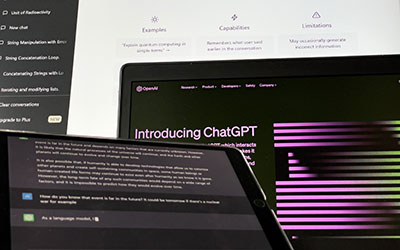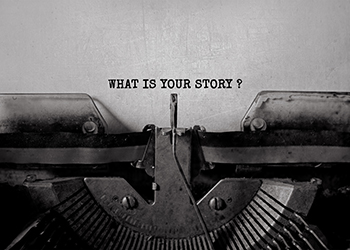Reimagining the Classroom: How AI is Transforming Teaching and Learning
 Higher education is no stranger to innovation, but the rise of artificial intelligence (AI) is accelerating change at a pace few could have imagined. From personalized learning experiences to AI-powered tutoring, the classroom is evolving — and so is the role of the educator.
Higher education is no stranger to innovation, but the rise of artificial intelligence (AI) is accelerating change at a pace few could have imagined. From personalized learning experiences to AI-powered tutoring, the classroom is evolving — and so is the role of the educator.
Teaching with AI, Not Replacing It
Contrary to some fears, AI isn’t here to replace faculty. It’s augmenting their ability to teach more effectively. Tools like AI teaching assistants can answer routine student questions, freeing up faculty time for deeper instruction and mentoring. Natural language tools like ChatGPT are also helping students refine ideas, explore content more deeply, and receive immediate feedback.
Personalization at Scale
AI excels at pattern recognition, and when applied thoughtfully, it enables personalized learning paths. Adaptive platforms can now identify a student’s strengths and gaps in real time, offering customized content, assessments, and pacing. For institutions, this means improving outcomes while addressing equity and access.
The New Digital Literacy
As AI becomes more integrated into education, understanding how to use it responsibly is becoming a key skill — for both students and faculty. Institutions are revisiting academic integrity policies and offering training on ethical AI use, ensuring learners are prepared for a workforce where AI is ubiquitous.
Challenges and Opportunities Ahead
Integrating AI is not without challenges. Bias in AI models, data privacy, and equitable access to tools are all real concerns. But for forward-looking institutions, these challenges are opportunities — to lead, to innovate, and to reimagine the student experience.
At GPRS, we help institutions make sense of the shifting higher ed landscape. AI in the classroom is just the beginning—how you lead through it makes all the difference.

 You may have heard your peers in higher ed or your digital agency talking about advertising on Spotify, Pandora, Reddit, Pinterest or even TikTok. These social platforms have become commonplace everyday “stops” for many people, especially as
You may have heard your peers in higher ed or your digital agency talking about advertising on Spotify, Pandora, Reddit, Pinterest or even TikTok. These social platforms have become commonplace everyday “stops” for many people, especially as  By now, it is not new news that colleges have had to drastically alter their admissions process. In both undergrad and higher ed institutions alike, requirements have quickly shifted as a result of the pandemic limitations. Schools that never intended to veer from their admissions “rites of passage” have been forced to change their processes or risk being changed by the landscape.
By now, it is not new news that colleges have had to drastically alter their admissions process. In both undergrad and higher ed institutions alike, requirements have quickly shifted as a result of the pandemic limitations. Schools that never intended to veer from their admissions “rites of passage” have been forced to change their processes or risk being changed by the landscape. By now, it is likely that your school has a statement on its homepage following all of the changes COVID-19 has created in the higher education space. However, if the plan only goes so far as detailing what the overall university is doing, you may need to take it a step further to communicate how your individual programs will operate within your business school.
By now, it is likely that your school has a statement on its homepage following all of the changes COVID-19 has created in the higher education space. However, if the plan only goes so far as detailing what the overall university is doing, you may need to take it a step further to communicate how your individual programs will operate within your business school. How do you evaluate marketing effectiveness and enrollment in a year where benchmarks are out the window?
How do you evaluate marketing effectiveness and enrollment in a year where benchmarks are out the window? When the Spring 2020 recruiting cycle was upended mid-stream due to COVID-19, many schools had to pivot quickly. Since then, the entire higher education industry including recruiters, marketers and leaders have been operating in pandemic emergency mode, focusing on the short term out of necessity and trying to remain as flexible as possible to address continuous change. As such, there have been
When the Spring 2020 recruiting cycle was upended mid-stream due to COVID-19, many schools had to pivot quickly. Since then, the entire higher education industry including recruiters, marketers and leaders have been operating in pandemic emergency mode, focusing on the short term out of necessity and trying to remain as flexible as possible to address continuous change. As such, there have been  You don’t have to be intimidated by podcasts. In fact, creating them and leveraging them may be easier than you think. Read on for some tips on developing this unique and sustainable form of content to add to your school’s marketing strategy.
You don’t have to be intimidated by podcasts. In fact, creating them and leveraging them may be easier than you think. Read on for some tips on developing this unique and sustainable form of content to add to your school’s marketing strategy. Every graduate program claims to have rigorous academics, highly regarded faculty and fantastic employment or advancement opportunities. But how do you prove that your institution is worth the investment and that students can anticipate the success they’re seeking? This is where the stories of the students who have benefited from your program and have gone on to do great things can help your digital strategy. Prospects want to see real people that they can relate to and stats that predict desirable future outcomes.
Every graduate program claims to have rigorous academics, highly regarded faculty and fantastic employment or advancement opportunities. But how do you prove that your institution is worth the investment and that students can anticipate the success they’re seeking? This is where the stories of the students who have benefited from your program and have gone on to do great things can help your digital strategy. Prospects want to see real people that they can relate to and stats that predict desirable future outcomes. Thinking to the future can be overwhelming at the moment, especially when everything is a big question mark. Although you can’t predict what’s coming next for our country during the COVID-19 health crisis, it’s important to continue work on your recruiting and enrollment plans so you will be positioned for success when everything normalizes. Here are some ways to keep an eye on recruiting and enrollment even though your plans are currently being altered.
Thinking to the future can be overwhelming at the moment, especially when everything is a big question mark. Although you can’t predict what’s coming next for our country during the COVID-19 health crisis, it’s important to continue work on your recruiting and enrollment plans so you will be positioned for success when everything normalizes. Here are some ways to keep an eye on recruiting and enrollment even though your plans are currently being altered. In the wake of the recent global pandemic COVID-19, or coronavirus, colleges and universities everywhere are being forced into change. It’s uncomfortable, unprecedented and seemingly without end as things are developing rapidly. Although no one can predict how the next few weeks or months will unfold and it’s uncertain how this will impact the higher ed industry specifically, here are a few lessons we’ve learned from working with graduate programs during this evolving time.
In the wake of the recent global pandemic COVID-19, or coronavirus, colleges and universities everywhere are being forced into change. It’s uncomfortable, unprecedented and seemingly without end as things are developing rapidly. Although no one can predict how the next few weeks or months will unfold and it’s uncertain how this will impact the higher ed industry specifically, here are a few lessons we’ve learned from working with graduate programs during this evolving time.
